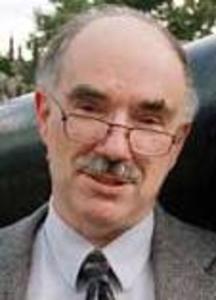 On Sept. 12, 1759, a quarter-millennium ago, British Gen. James Wolfe landed his army under the steep bluffs that hid the Plains of Abraham and the walls of Quebec.
On Sept. 12, 1759, a quarter-millennium ago, British Gen. James Wolfe landed his army under the steep bluffs that hid the Plains of Abraham and the walls of Quebec.
While rangers and light infantry battled the French force guarding the top of the hill, a rushing tide carried the British past their landing place. Somehow, they stumbled back to the Anse au Foulon, struggled up the slope and lined up to await the French response.
Perhaps the Marquis de Montcalm should have collected his whole army while the British awaited their fate. Instead, as Wolfe had hoped, Montcalm mustered his white-coated French regulars, mixed in a few thousand motley Canadian militia and his aboriginal allies and marched them up from Beauport to the Butte a Neveu, a rocky mound between Quebec's walls and the British. Experts tell us Montcalm should have calmed down his troops and waited for the British to attack up his hill. He didn't.
The armies of Wolfe and Montcalm were about the same size but they had trained differently. An infantry colonel for most of his career, Wolfe had spent the summer drilling his men to load and fire their brown Bess muskets for best effect – at short range, they were killers!
Montcalm had mixed his regulars and militia but he had despaired of making "real" soldiers from the scruffy and wilful militia. Faced with an enemy, the Canadiens and aboriginals did what modern soldiers are told to do: take cover, crawl to see an enemy, take aim and shoot. That morning, that's what they did, killing and wounding lots of British redcoats; even hitting Wolfe himself on his hand and his belly.
Suddenly, the French regulars began pouring down from their hill, eager to crush the British as they had at Monongahela, Oswego, Fort William Henry, Carillon and, weeks before, at Montmorency Falls. A gloomy Montcalm did not stop them. Badly out of range, some began to shoot. Amid the trees and boulders of the Butte, the regulars dissolved into three distinct crowds, two heading north, one south, all missing the British centre. Forty yards from the stolid British line, the French stopped.
Orders, audible to both sides, cut the air. Redcoats raised their muskets and, in succession, each line fired. A six-pounder cannon on each flank added to the carnage.
What happened next? Suddenly French soldiers knew: they would die. The chill of terror that dissolved British regulars in earlier battles now struck Montcalm's men. A British cannon shell smashed their general's side. As soldiers lugged Montcalm back to Quebec, they were jostled by terrified whitecoats fleeing for their lives.
Bayonets glinting, the British followed at their heels. On the left, Fraser's Highlanders dropped their muskets, drew their heavy claymores, and raced forward with blood-curdling screams to cut off a French escape to Beauport.
This is as much of the battle as most historians report. What more do you need?
Montcalm died before dawn on the 14th. Hit again, probably by a Canadien militiaman, Wolfe died as the French ranks dissolved. Fighting on the Plains continued until dusk, sustained by Canadien militia and their native allies. When Quebec sovereignists killed plans to re-enact the battle they helped keep that heroic story secret. Perhaps they had no idea that it happened. When French regulars fled, the militia fought on.
Five times they stopped Fraser's terrifying Highlanders from slaughtering the terrified regulars. Thanks to their despised militia and aboriginal allies, Montcalm's French regulars could safely stop at Beauport, catch their breath, and begin a long, dreary march back to Montreal to prepare for another year of war. Did the separatists not want anyone to know?
Thanks to the Canadiens, Montcalm's deputy, the Chevalier de Levis, could lead a French army back to Quebec in April 1760. Decimated by scurvy, starvation and frostbite during a bitterly cold winter, an enfeebled British garrison marched out to Ste-Foy on April 28 to drive the French away. Like Montcalm's men five months earlier, the British lost. Survivors fled back through the gates of Quebec, leaving a thousand dead and wounded. Would Quebec be French again?
Both sides waited for the moment that really mattered. Whose navy would be the first up the St. Lawrence? On May 9, a British sentry spotted a distant sail. It was HMS Lowestoft, the British frigate that had carried Wolfe's corpse home to England. A British fleet followed. Only then did Wolfe's victory really matter. Its navy destroyed in European and African waters, France left its valiant colonists to Britain's mercy.
Twice defeated by the French Canadians, their governor, James Murray, would, out of respect for his adversaries, help safeguard the French language and law and allow the Catholic Church to replace Quebec's deceased bishop. Would sovereignists ever want anyone to know?
***
Desmond Morton was founding director of McGill's Institute for the Study of Canada and is the author of A Short History of Canada and the forthcoming Histoire militaire du Canada.
CBC PHOTO French regulars march into battle in the CBC reconstruction of the Battle of the Plains of Abraham 250 years ago.
Quebec, 1759: Who's missing from the script?
Most accounts of what happened on the Plains of Abraham leave out half the story


















Laissez un commentaire Votre adresse courriel ne sera pas publiée.
Veuillez vous connecter afin de laisser un commentaire.
Aucun commentaire trouvé